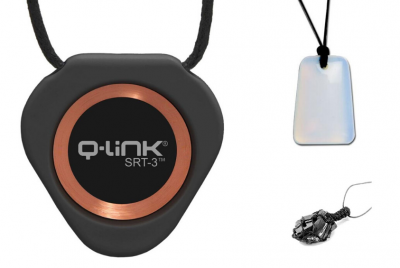When worn correctly, both Bluetooth and wired earbuds offer a lightweight and comfortable way to listen…
All About Low EMF Power Strips
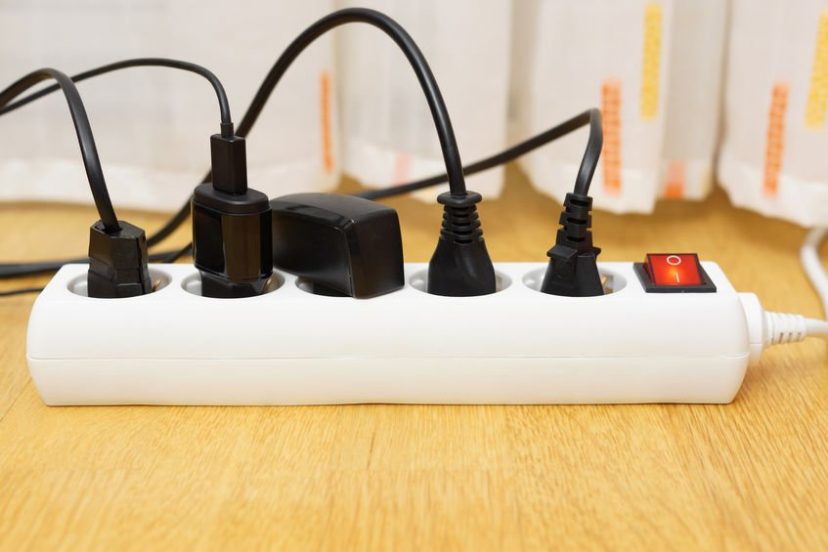
*We may earn a commission for purchases made using our links. Please see our disclosure to learn more.
A modern home has many different sources of EMF radiation. We often focus on the bigger culprits — things like WiFi signals and smart meters. And getting those sources under control is certainly an important step in bringing down your home’s overall EMF radiation levels. But what if you’ve already tackled the major issues and are still noticing high levels of EMF radiation?
Note here that a high level can be somewhat relative. If you suffer from Electromagnetic Hypersensitivity, for example, no amount of EMF radiation may be acceptable to you, which can pose somewhat of a challenge. If you are scouring for ways to reduce your home’s EMF levels even after taking care of the major sources, it’s time to start digging a little deeper.
One potential minor culprit of EMF radiation in your home are your power strips. We use these devices primarily for convenience — they increase how many items we can have plugged in to a single outlet, protect our electronics from electrical surges, and even expand the reach of a cord that is just a little too short. They come in handy, and if you’re trying to power your entire home office using a single electrical outlet, they can be downright necessary. But, if you are intolerant to EMF radiation, they could also be exacerbating your symptoms.
Does that mean you need to ditch the power strips all together?
Fortunately, no. You can still take advantage of the additional outlet space, but you may need to be a bit more selective over what power strips you use. In this guide, we will highlight a few lower EMF options. Then, we will provide tips for finding your own low EMF power strip, and even talk about how you can measure the radiation from your existing models.
Best low EMF power strips
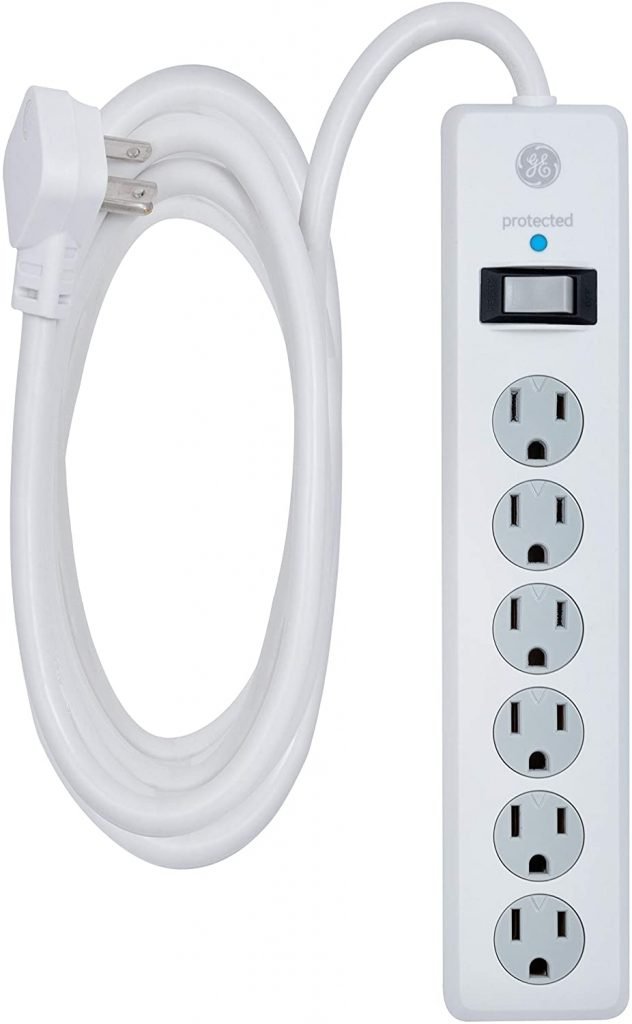
4. GE 6 Outlet Surge Protector. If you’ve got a little one at home, GE’s surge protector has a unique safety feature that may put it ahead of the competition. When an outlet on the power strip isn’t in use, you can use the twist-to-close safety cover to help prevent little fingers or toys from danger. The power strip comes with a variety of cord lengths, running from two feet to 20 feet, which allows you to place more distance between you and the surge protector itself. The blue protected indicator light lets you know if the power strip is operational, and it can be turned on or off by easily flipping a switch. You can even mount this power strip on your wall or floor using keyholes in the back of the unit.
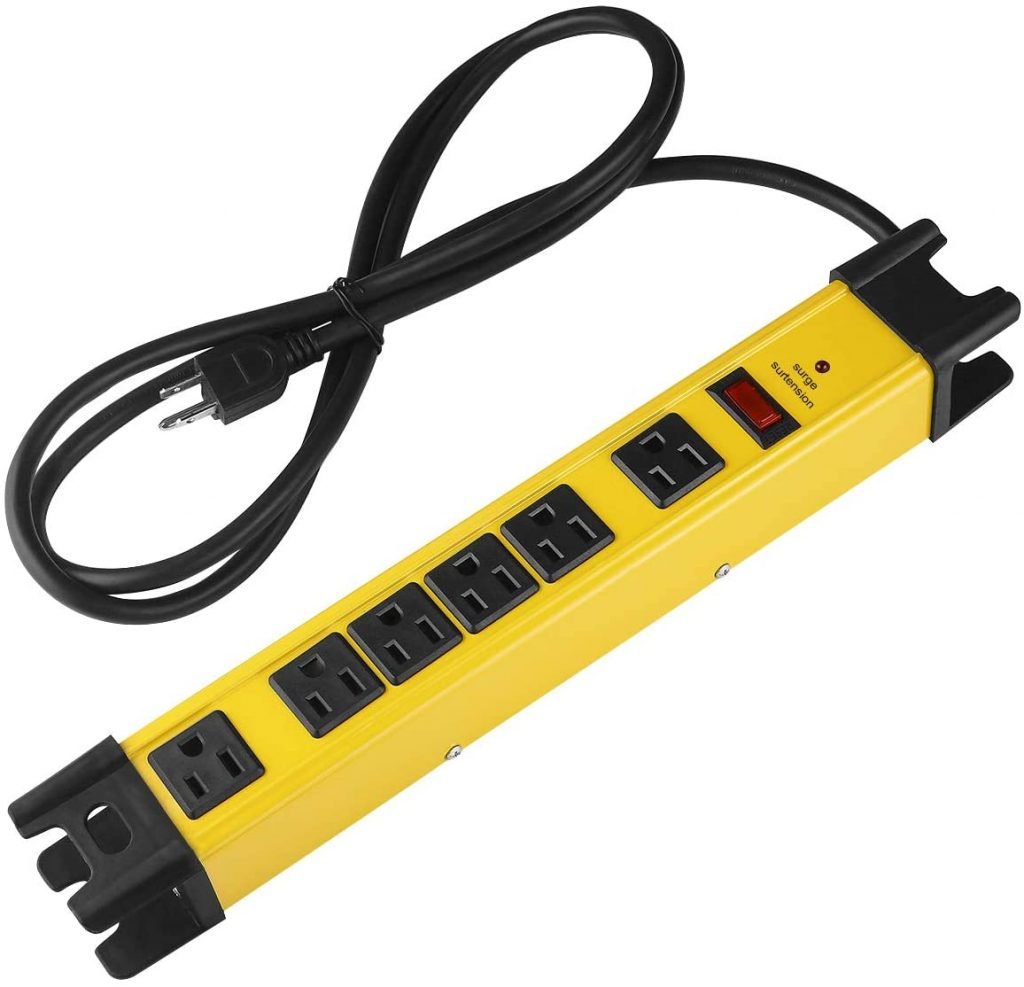
3. CCCEI Heavy Duty Power Strip. For those who need something a little more heavy-duty, there is this power strip from CCCEI. Made from industrial-grade metal, this surge protector features a six-foot power cord and six outlets. The strip itself is large enough that two of the outlets are spaced further apart in order to accommodate larger plugs. The fire protection coating is an excellent added safety feature, as is the automatic overload protection — in the event the power strip starts to overheat or become overloaded, the strip will immediately switch itself off. This power strip also features a hanging hole so you can mount it on the wall as well as an area you can wrap any unneeded cord around. CCCEI’s power strip offers up 1200 joules of protection in a heavy-duty package.
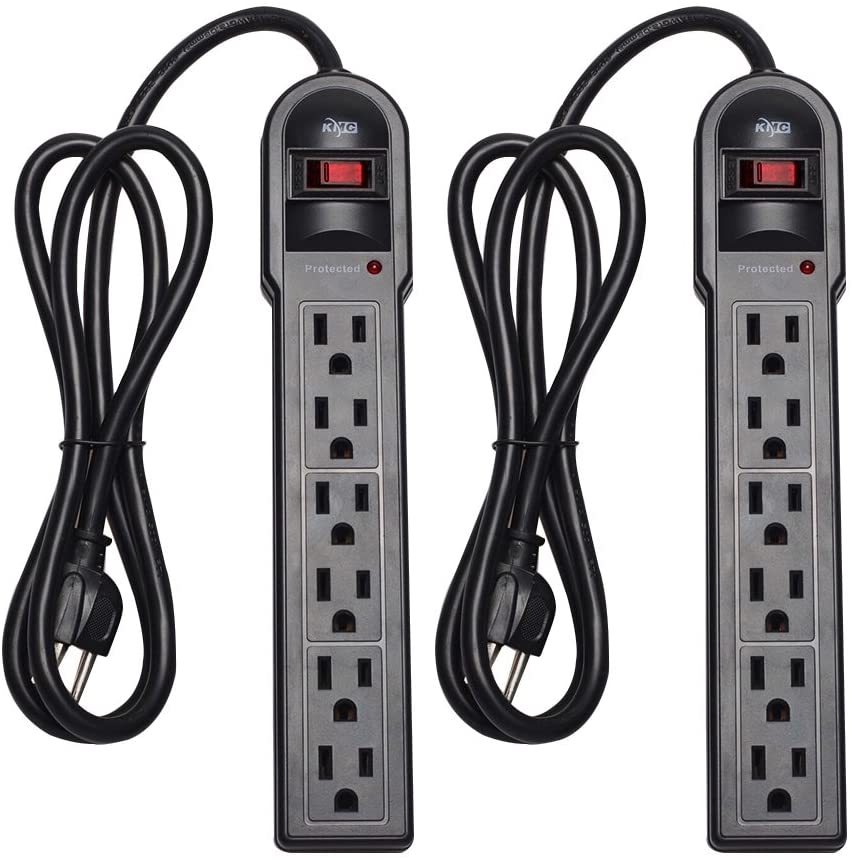
2. KMC 6-Outlet Surge Protector 2-Pack. KMC’s surge protector comes as a basic, budget-friendly two pack. The simple design includes six outlets and an easy-to-operate protection switch. The power cord is four feet long and it is coated for added durability. Safety features for KMC’s surge protector include automatic shut-off in the event that the unit overheats, is overloaded, or an item is over-charged. The unit has keyhole mounting in the back so you can easily hang it on the wall or another surface, and the indicator light helps give a visual cue when the surge protector is powered on. KMC’s surge protector provides 900 joules of protection, which is ample for most electronics, including laptop and desktop computers.
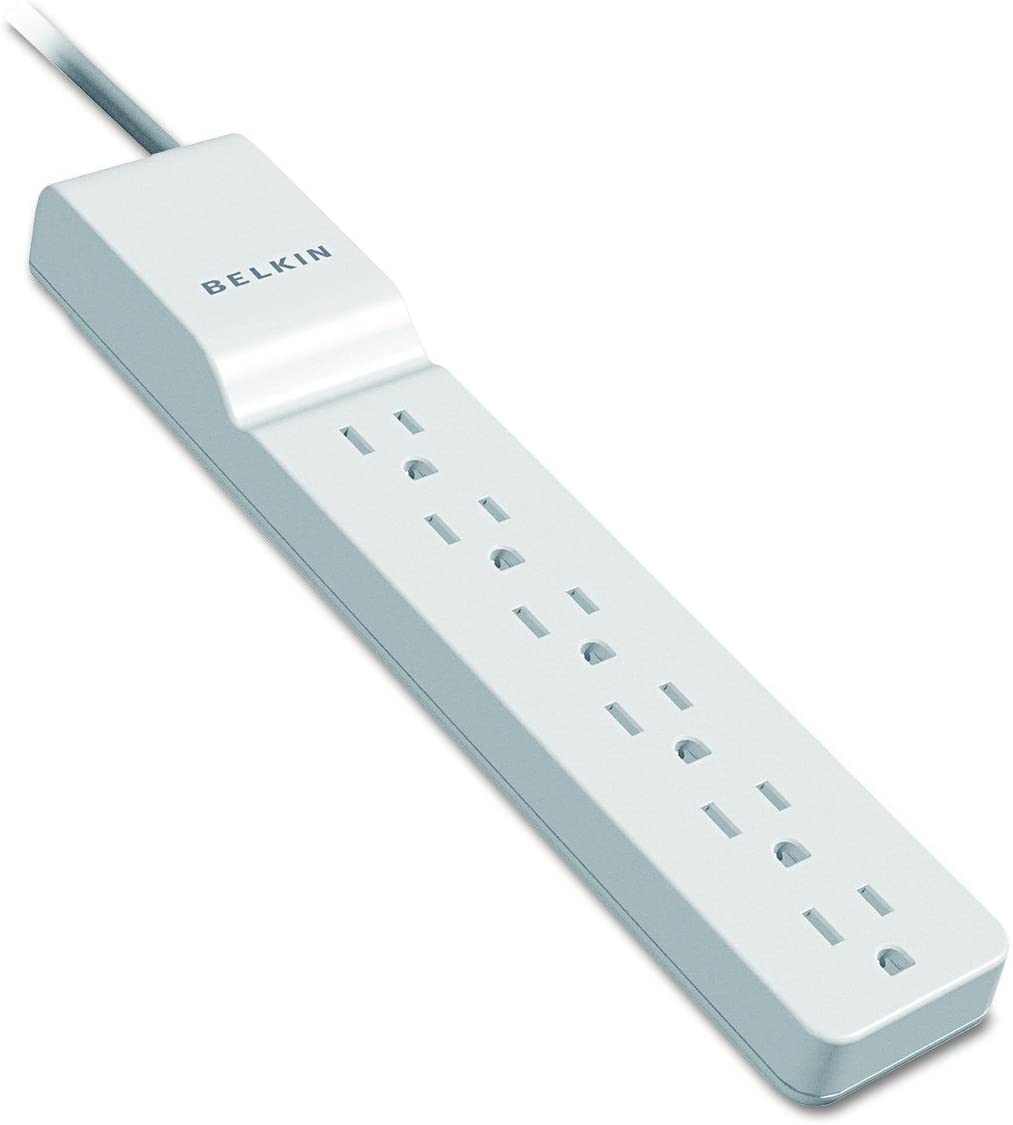
1. Belkin 6-Outlet Power Strip. This simple power strip from Belkin does everything you need without any extra bells and whistles. The six foot cord is plenty long enough to put adequate distance between you and the power strip. The flat rotating plug is perfect for fitting in tight spaces such as between the couch and the wall, and it is available in two different color choices: black and white. Sleek and low profile, Belkin’s power strip has a 600 Joule energy rating and features six evenly spaced outlets.
Finding a low EMF power strip
The options on our list are merely a starting point and is by no means exhaustive. If anything, the list serves to highlight the type of power strip you should be looking for if you are trying to lower your EMF levels. Namely — keep it simple.
Many modern power strips have USB slots. These are convenient for charging your phone and other electronic devices, but they also increase the amount of EMF radiation produced by the power strip. If possible, forgo the USB slots in your new power strip. If you still need to charge electronics with a USB cord, find an adapter you can plug the cord into. Something like the one-port 12W USB Wall Charger from AmazonBasics is an inexpensive solution.
As an added bonus, many power strips with USB chargers emit a high-pitched whining noise when the USB slots are in use. This can be a little annoying, and using an adapter gets rid of the problem completely.
Next, the fewer outlets, the better. Unless you absolutely need that 12-outlet surge protector, try and make do with less. Figure out how many devices are going to be plugged into the power strip and try to find an option with that many outlets. As a general rule, a power strip with six outlets or fewer will produce less EMF radiation than larger power strips.
Tips for using your power strip
When it comes time to use your power strip, there is one thing, in particular, that you should keep in mind. Namely, the inverse square law. That is, the closer to a radiation source you are, the higher your exposure. The more distance you can create between you and the source, the more that exposure level will drop off.
No power strip is going to be truly EMF free. But you can reduce your exposure by simply placing as much distance as possible between you and the device. Some power strips are mountable, so you could try mounting it to the wall a few feet away from your desk or wherever else you are using the surge protector.
With that in mind, it is especially helpful if your power strip comes with a long cord. The longer the cord, the more distance you are going to be able to create between you and the unit. If possible, try and maintain at least five feet of distance between you and the power strip.
It may also be helpful to either unplug or switch the power strip off when it’s not in use. That way you are only exposed to radiation from the device while you are actively using it, and your body can catch a break during the offtime.
Testing for power strip radiation
Whether you purchased a new power strip or you want to try and make do with the ones you have, testing your power strips with an EMF meter is always a good idea.
If you’ve already taken many steps to reduce your home’s EMF levels, there’s a good chance you already have one of these meters. Just make sure that yours is capable of detecting electric and magnetic fields, in particular, and you should be good to go. If you don’t already have a meter, or if you would simply like to upgrade, our guide to the Best EMF Meters For Any Budget is a good place to start your search.
To test your power strip, unplug everything from the device while keeping it plugged into the wall and switched on. Take your meter and first measure the magnetic fields present directly next to it, as well as from a few feet away. Odds are it won’t return much of a reading for this yet. When you switch over to electric fields, however, you may notice that your levels begin to jump up.
You can also try repeating the measurement with the power strip switched off, with it unplugged, and with items plugged into it. All of these readings give you valuable information about how much radiation you are exposed to while the power strip is in use.
Parting thoughts
Power strips are often necessary, especially in areas such as home entertainment centers and offices where you are trying to plug several items into a single electrical outlet. Rather than accept the EMF radiation they produce, try switching to lower EMF alternatives. This is especially important for those with EHS, but can ultimately benefit anyone who is concerned about the health effects of EMF exposure.


